Can Europe and Russia Finally Land And Operate A Lander Successfully On Mars
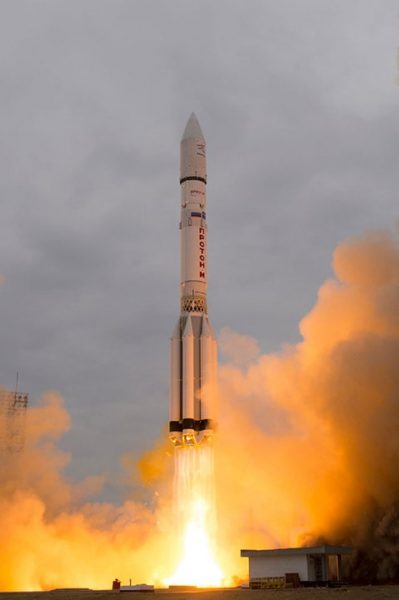
On the 19th of October of this year close to 11 pm (AWST), one space agency with a very unlucky first attempt and another with what can only be described as a horrendous record of landing spacecraft on Mars will watch as the lander section of the ExoMars experiences the dreaded “10 minutes from hell” as it blasts through Mars’ thin atmosphere and attempts to land on its surface.
ExoMars, short for “Exobiology on Mars”, is a joint European Space Agency/Roscosmos Martian astrobiology life searching orbiter/lander mission with goals to search for signs of past and present life on Mars, investigate how the Martian water and geochemical environment varies, and investigate atmospheric trace gases and their sources. While doing this the mission will also demonstrate the technologies for a future ESA/Roscosmos Mars sample return mission which was to be launched in 2018 but has been delayed to 2020.
The orbiter is known as the Trace Gas Orbiter (TGO), and the lander named Schiaparelli after the 19th-century astronomer Giovanni Schiaparelli was launched on a Russian Proton rocket from the Baikonur Cosmodrome in the Kazakhstan desert on the 14th of March of this year. After the orbiter releases the Schiaparelli lander on the 19th of October, it’ll then proceed to map sources of methane and other gases on Mars, while the lander will test new key landing technologies for the 2020 mission. The orbiter features four research instruments and will also act as a communications relay satellite.
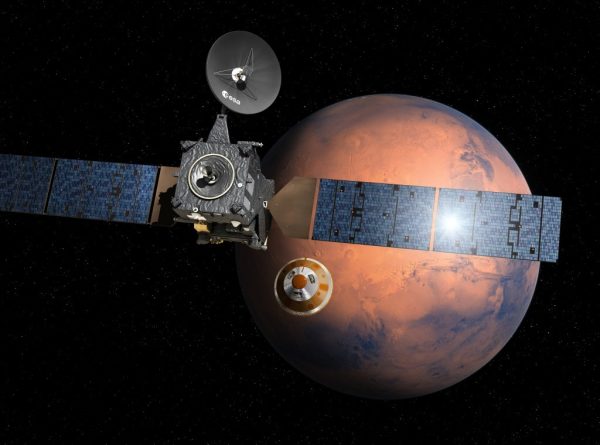
The Schiaparelli EDM lander (Entry, Descent and Landing Demonstrator Module) is expected to enter the Martian atmosphere at 10:42 pm (AWST) and will land in the Meridiani Planum region, in the southern highlands of Mars near its equator. The landing ellipse measures 100 km by 15 km (62 miles by 9 miles). The region was chosen based on its relatively flat and smooth characteristics, as indicated in the topography map. NASA’s Opportunity rover also landed within this landing ellipse near Endurance crater in 2004, and has been exploring the 22 km (13 miles) wide crater for the last five years.
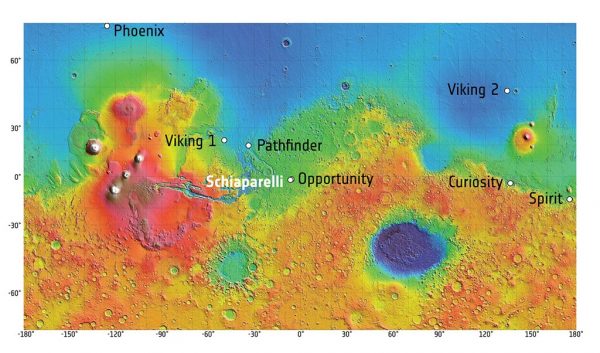
The lander is intended to provide ESA and Roscosmos with the technology for landing on the surface of Mars. The lander’s payload contains the meteorological DREAMS (Dust Characterization, Risk Assessment, and Environment Analyser on the Martian Surface) package, which will operate for between two and eight Martian days and consists of sensors to measure the wind speed and direction (MetWind), humidity (MetHumi), pressure (MetBaro), surface temperature (MarsTem), the transparency of the atmosphere (Optical Depth Sensor; ODS), and atmospheric electrification (Atmospheric Radiation and Electricity Sensor; MicroARES). The lander will also feature a camera called DECA (Entry and Descent Module Descent Camera) which will operate during the descent and deliver additional scientific data and the exact location of the lander.
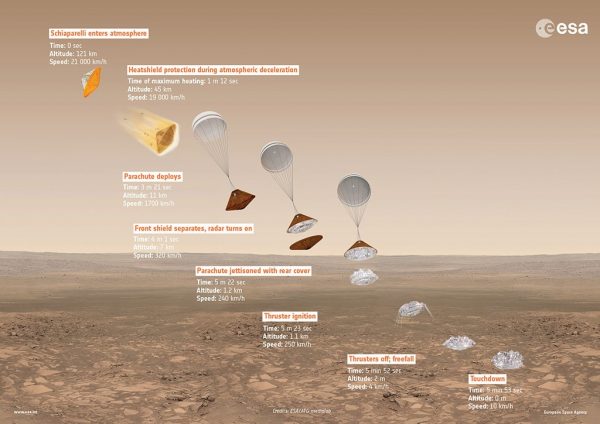
ExoMars has had a very long journey to get off the drawing board. The mission has gone through several planning phases with various proposals for landers, orbiters, launch vehicles, and even international cooperation. Some of these false starts include the now-defunct 2009 Mars Exploration Joint Initiative (MEJI) with NASA and the original concept of a large robotic rover to be a part of ESA’s Aurora Programme as a Flagship mission approved by the ESA ministers in December 2005 for launch in 2011 aboard a Russian Soyuz-Fregat rocket. The rover was to have acted as a stationary ground station, but budgeting crises over the years delayed the mission and caused changes to the design and the mission.
We wish both agencies all the best with the mission. A successful landing and mission for ESA would continue to increase the confidence of an agency still on a high from the highly successful Rosetta/Philae mission, and make up for their Beagle 2 lander that landed successfully in December of 2003 but died after its solar panels failed to properly open.
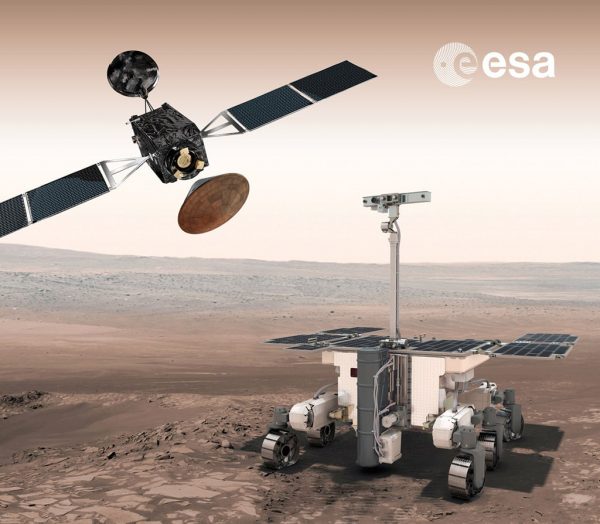
For Roscosmos it would mean they’d made up for missions like the 2011 Phobos-Grunt mission and the numerous Mars probes sent in the 60s, 70s, 80s, and 90s, thereby proving they can send a mission to Mars, finally achieving that long-awaited success after so many disappointments!
If the ExoMars mission does go to plan this year, in 2020 a Roscosmos-built lander (ExoMars 2020) will deliver the ESA-built ExoMars rover to the Martian surface. The rover will be controlled from ALTEC’s Rover Control Centre in Italy and carry instruments built by Roscosmos.





